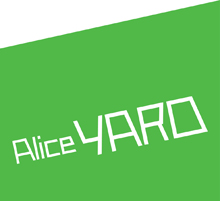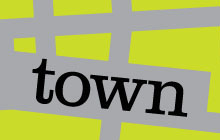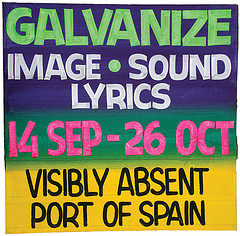Friday, June 05, 2009
The box of tea
On 4 June, 1989, the Chinese government sent tanks into Tiananmen Square to clear out the pro-democracy protesters--many of them university students--who for seven weeks had occupied this iconic ground in the middle of Beijing. No one knows how many protesters were arrested, beaten, or killed during what some now call the Tiananmen Square massacre, and many acts of courage and defiance went unrecorded.
On 5 June, as the assault on the protesters continued, a man whose name we don't know did something unbelievably brave. Dressed in a white shirt and dark trousers, carrying what seemed to be a shopping bag in his left hand--had he just left home to run an errand, and inadvertently got caught up in History?--he saw a column of tanks rolling down Changan Avenue into Tiananmen Square, and decided he would try to stop them.
He stepped into the middle of the avenue, right into the path of the tanks, even while other bystanders were fleeing the scene. We don't know what he was feeling or thinking as the tanks steadily bore down upon him, but he looked perfectly calm, as if facing down heavily armoured vehicles were something he did every day. The tanks bore down and he stood still, and for people looking on there were sickening seconds when it seemed the lead tank driver would call the man's bluff and crush him under the vehicle's wheels. But the man stood still, and then, at the last moment, the tank stopped.
We don't know his name, but the world knows about this man's courage because photographers and TV cameramen positioned near Tiananmen Square captured this now-famous encounter. By the next day, tens of millions of people all over the world had seen an image of this little man carrying a shopping bag and facing down not just four army tanks but an entire official apparatus of state oppression.
Yesterday the New York Times published first-hand accounts from four photographers who witnessed this event on behalf of the rest of the world. They took their photos and transmitted them out of China despite the best efforts of government censors and the secret police. One photographer, Charlie Cole, had to wrap his roll of film in plastic and hide it in the toilet tank in his hotel bathroom so the police would not find it. Another, Stuart Franklin, got a student to smuggle his film out of China secreted in a box of tea.
Since I read Franklin's account yesterday, I haven't been able to get that precious box of tea out of my head.
Twenty years ago, photojournalists still shot on film, and to share a life-changing image with the world, they might have had to get that little roll of emulsion-coated cellulose past various physical barriers to a safe media house willing to publish it. In 1989, the photo of "Tank Man" appeared on the front page of the New York Times and many other newspapers, but you had to find a physical copy of the newspaper to see it.
Today, there are millions of people all over the world with access to hardware and software--the right kind of mobile phone will suffice--that allows them to take a photograph or a video clip or write a brief report on an event unfolding before their eyes, and share it almost instantaneously with a global audience of many millions more.
I am proud to be a volunteer for Global Voices, a groundbreaking project harnessing the energy and skills of hundreds of volunteers to amplify the voices of citizen journalists everywhere. Global Voices Advocacy is the branch of GV that supports online freedom of speech and activism; it seeks "to build a network of supporters for online speech rights, provide tools and knowledge to help people avoid or surmount censorship, and understand and navigate the risks and challenges of online speech in repressive environments."
This blog post is part of Zemanta's "Blogging For a Cause" campaign to raise awareness and funds for worthy causes that bloggers care about.
I vote for Global Voices Advocacy, because if events like those in Tiananmen Square in 1989 ever happen in front of my eyes, I hope I can tell the world about them without the intervention of a box of tea.
On 4 June, 1989, the Chinese government sent tanks into Tiananmen Square to clear out the pro-democracy protesters--many of them university students--who for seven weeks had occupied this iconic ground in the middle of Beijing. No one knows how many protesters were arrested, beaten, or killed during what some now call the Tiananmen Square massacre, and many acts of courage and defiance went unrecorded.
On 5 June, as the assault on the protesters continued, a man whose name we don't know did something unbelievably brave. Dressed in a white shirt and dark trousers, carrying what seemed to be a shopping bag in his left hand--had he just left home to run an errand, and inadvertently got caught up in History?--he saw a column of tanks rolling down Changan Avenue into Tiananmen Square, and decided he would try to stop them.
He stepped into the middle of the avenue, right into the path of the tanks, even while other bystanders were fleeing the scene. We don't know what he was feeling or thinking as the tanks steadily bore down upon him, but he looked perfectly calm, as if facing down heavily armoured vehicles were something he did every day. The tanks bore down and he stood still, and for people looking on there were sickening seconds when it seemed the lead tank driver would call the man's bluff and crush him under the vehicle's wheels. But the man stood still, and then, at the last moment, the tank stopped.
We don't know his name, but the world knows about this man's courage because photographers and TV cameramen positioned near Tiananmen Square captured this now-famous encounter. By the next day, tens of millions of people all over the world had seen an image of this little man carrying a shopping bag and facing down not just four army tanks but an entire official apparatus of state oppression.
Yesterday the New York Times published first-hand accounts from four photographers who witnessed this event on behalf of the rest of the world. They took their photos and transmitted them out of China despite the best efforts of government censors and the secret police. One photographer, Charlie Cole, had to wrap his roll of film in plastic and hide it in the toilet tank in his hotel bathroom so the police would not find it. Another, Stuart Franklin, got a student to smuggle his film out of China secreted in a box of tea.
Since I read Franklin's account yesterday, I haven't been able to get that precious box of tea out of my head.
Twenty years ago, photojournalists still shot on film, and to share a life-changing image with the world, they might have had to get that little roll of emulsion-coated cellulose past various physical barriers to a safe media house willing to publish it. In 1989, the photo of "Tank Man" appeared on the front page of the New York Times and many other newspapers, but you had to find a physical copy of the newspaper to see it.
Today, there are millions of people all over the world with access to hardware and software--the right kind of mobile phone will suffice--that allows them to take a photograph or a video clip or write a brief report on an event unfolding before their eyes, and share it almost instantaneously with a global audience of many millions more.
I am proud to be a volunteer for Global Voices, a groundbreaking project harnessing the energy and skills of hundreds of volunteers to amplify the voices of citizen journalists everywhere. Global Voices Advocacy is the branch of GV that supports online freedom of speech and activism; it seeks "to build a network of supporters for online speech rights, provide tools and knowledge to help people avoid or surmount censorship, and understand and navigate the risks and challenges of online speech in repressive environments."
This blog post is part of Zemanta's "Blogging For a Cause" campaign to raise awareness and funds for worthy causes that bloggers care about.
I vote for Global Voices Advocacy, because if events like those in Tiananmen Square in 1989 ever happen in front of my eyes, I hope I can tell the world about them without the intervention of a box of tea.
Subscribe to:
Post Comments (Atom)









No comments:
Post a Comment